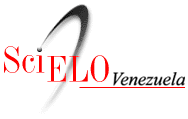Relationship between the academic training of university students and the success of their projects in the NASA Space Apps Challenge, Guayaquil (2019–2023)
DOI:
https://doi.org/10.47606/ACVEN/PH0371Keywords:
project-based learning, NASA Space Apps Challenge, academic achievementAbstract
University hackathons foster collaboration and innovation, although evidence on the relationship between teams’ academic training and project success remains limited. This study examined the link between academic background—considering field of study, STEM versus non-STEM, monodisciplinary versus interdisciplinary composition, and dominance of Computing and Engineering—and the outcomes achieved by participating teams in the NASA Space Apps Challenge Guayaquil during the 2019–2023 period. The research followed a quantitative, non-experimental, cross-sectional, and correlational approach, with team-year as the unit of analysis. The dependent variable was project success, defined as Global Winner versus Global Nominee. Predictors included the proportion of STEM participants, Blau’s index of disciplinary diversity, interdisciplinarity (two or more macro-areas), and dominance of Computing and Engineering. Process covariates considered were the proportion of mentorship received, prior experience, female participation, and gender diversity. Local performance was assessed using a standardized annual score (SCLz), derived from five rubric-based criteria with high internal consistency. The analyses comprised descriptive statistics, Pearson and Spearman correlations, Fisher’s exact tests for binary associations, and sensitivity checks with alternative thresholds. Findings indicate no strong linear associations between STEM proportion or disciplinary diversity and local performance. Prior experience showed a moderate positive relationship with performance (p < 0.05), whereas mentorship and gender composition did not exhibit consistent associations. Overall, results suggest that team success does not depend on a single academic profile, but rather on team practices and structured mentorship. Expanding the sample, applying methods suited to rare events, and incorporating continuous or ordinal outcomes derived from rubric-based assessments are recommended for future research.
Downloads
References
Abdul Rahman, H., Noraidi, A. A., Khalid, A. N. H., Mohamad-Adam, A. Z., Zahari, N. H., & Tuming, N. E. (2025). Practical guide to calculate sample size for chi-square test in biomedical research. BMC Medical Research Methodology, 25, 144. https://doi.org/10.1186/s12874-025-02584-4 DOI: https://doi.org/10.1186/s12874-025-02584-4
Edelsbrunner, P. A., Maier, M., Jauk, E., & Dörfler, T. (2025). The Cronbach’s Alpha of domain-specific knowledge tests: A meta-analysis. Educational Psychology Review. https://doi.org/10.1007/s10648-024-09982-y DOI: https://doi.org/10.1007/s10648-024-09982-y
Farkas, B. C., Németh, D., & Janacsek, K. (2023). The complexity of measuring reliability in learning tasks: An illustration using the ASRT task. Behavior Research Methods, 55(6), 2925–2944. https://doi.org/10.3758/s13428-022-02038-5 DOI: https://doi.org/10.3758/s13428-022-02038-5
García, M. B. (2023). Fostering an innovation culture in the education sector: A scoping review and bibliometric analysis of hackathon research. Innovative Higher Education. https://doi.org/10.1007/s10755-023-09651-y DOI: https://doi.org/10.1007/s10755-023-09651-y
Hayes, A. F., & Coutts, J. J. (2020). Use omega rather than Cronbach’s alpha for estimating reliability. Communication Methods and Measures, 14(1), 1–24. https://doi.org/10.1080/19312458.2020.1718629 DOI: https://doi.org/10.1080/19312458.2020.1718629
McGrath, O., & Burke, K. (2024). Binomial confidence intervals for rare events: Importance of defining margin of error relative to magnitude of proportion. The American Statistician, 78(4), 437–449. https://doi.org/10.1080/00031305.2024.2350445 DOI: https://doi.org/10.1080/00031305.2024.2350445
NASA Space Apps Challenge. (2023). Global winners. https://www.spaceappschallenge.org/2023/awards/global-winners/
NASA Space Apps Challenge. (2024). Global winners. https://www.spaceappschallenge.org/nasa-space-apps-2024/awards/global-winners/
Orawo, P. (2025). Confidence intervals for the model performance metrics: A tutorial. Statistical Methods in Medical Research. https://doi.org/10.1177/15741699251350368 DOI: https://doi.org/10.1177/15741699251350368
Raykov, T. (2024). Coefficient alpha and reliability of communication science measures: A note. Communication Methods and Measures, 18(1), 1–6. https://doi.org/10.1080/19312458.2024.2302125 DOI: https://doi.org/10.1080/19312458.2024.2302125
Rooholamini, A., Curiel, J., & Reimens, J. (2024). Health profession education hackathons: A scoping review. BMC Medical Education, 24, 484. https://doi.org/10.1186/s12909-024-04901-5 DOI: https://doi.org/10.1186/s12909-024-05519-7
Schulten, C., & Chounta, I.-A. (2024). How do we learn in and from hackathons? A systematic literature review. Education and Information Technologies, 29, 20103–20134. https://doi.org/10.1007/s10639-024-12668-1 DOI: https://doi.org/10.1007/s10639-024-12668-1
Scott, J. M., & Chang, C. (2024). The imperative to promote diversity post-Students for Fair Admissions v. Harvard: Measurement and implications. The Journal of Higher Education, 95(6), 907–925. https://doi.org/10.1080/00221546.2024.2385114 DOI: https://doi.org/10.1080/00221546.2024.2385114
Triana, M. del C., Kim, K., Byun, S. Y., Delgado, D. M., & Arthur, W. (2021). The relationship between team deep-level diversity and team performance: A meta-analysis of the main effect, moderators, and mediating mechanisms. Journal of Management Studies, 58(8), 2137–2179. https://doi.org/10.1111/joms.12670 DOI: https://doi.org/10.1111/joms.12670
Tyagi, A., Salhotra, R., Agrawal, A., & Kumar, R. (2023). Use of Pearson and Spearman correlation testing in Indian anesthesia journals: An audit. Indian Journal of Anaesthesia, 66(11), 827–834. https://doi.org/10.4103/joacp.joacp_13_22 DOI: https://doi.org/10.4103/joacp.joacp_13_22
UNESCO. (2020). Education for sustainable development: A roadmap. UNESCO. https://doi.org/10.54675/YFRE1448 DOI: https://doi.org/10.54675/YFRE1448
Vedres, B., Vasarhelyi, K., Török, J., & Palla, G. (2023). Inclusion unlocks the creative potential of gender diversity in teams. Nature Communications, 14, 4810. https://doi.org/10.1038/s41467-023-40276-8 DOI: https://doi.org/10.21203/rs.3.rs-2713291/v1
Yang, H., Li, Z., & Zhou, W. (2023). Board diversity and the marginal value of corporate cash holdings. Pacific-Basin Finance Journal, 79, 102089. https://doi.org/10.1016/j.pacfin.2023.102089 DOI: https://doi.org/10.1016/j.pacfin.2023.102048
Yoo, H.-S., Kim, D., Liu, J., & Joo, J. (2024). The interaction of inter-organizational diversity and team composition on innovation performance. Information & Management, 61(8), 104115. https://doi.org/10.1016/j.im.2024.104115 DOI: https://doi.org/10.1016/j.ipm.2024.103851
Yu, Q., Manalo, E., & Tang, X. (2024). A meta-analysis of the effects of design thinking on student learning. Humanities and Social Sciences Communications, 11, 686. https://doi.org/10.1057/s41599-024-03237-5 DOI: https://doi.org/10.1057/s41599-024-03237-5
Zhang, L., & Ma, Y. (2023). A study of the impact of project-based learning on student learning effects: A meta-analysis study. Frontiers in Psychology, 14, 1202728. https://doi.org/10.3389/fpsyg.2023.1202728 DOI: https://doi.org/10.3389/fpsyg.2023.1202728
Published
How to Cite
Issue
Section
License
Copyright (c) 2025 Roberto Augusto Poveda Páez, John Kevin Tigre Méndez, Josué Jandry Aranea Álava

This work is licensed under a Creative Commons Attribution-NonCommercial-ShareAlike 4.0 International License.
























